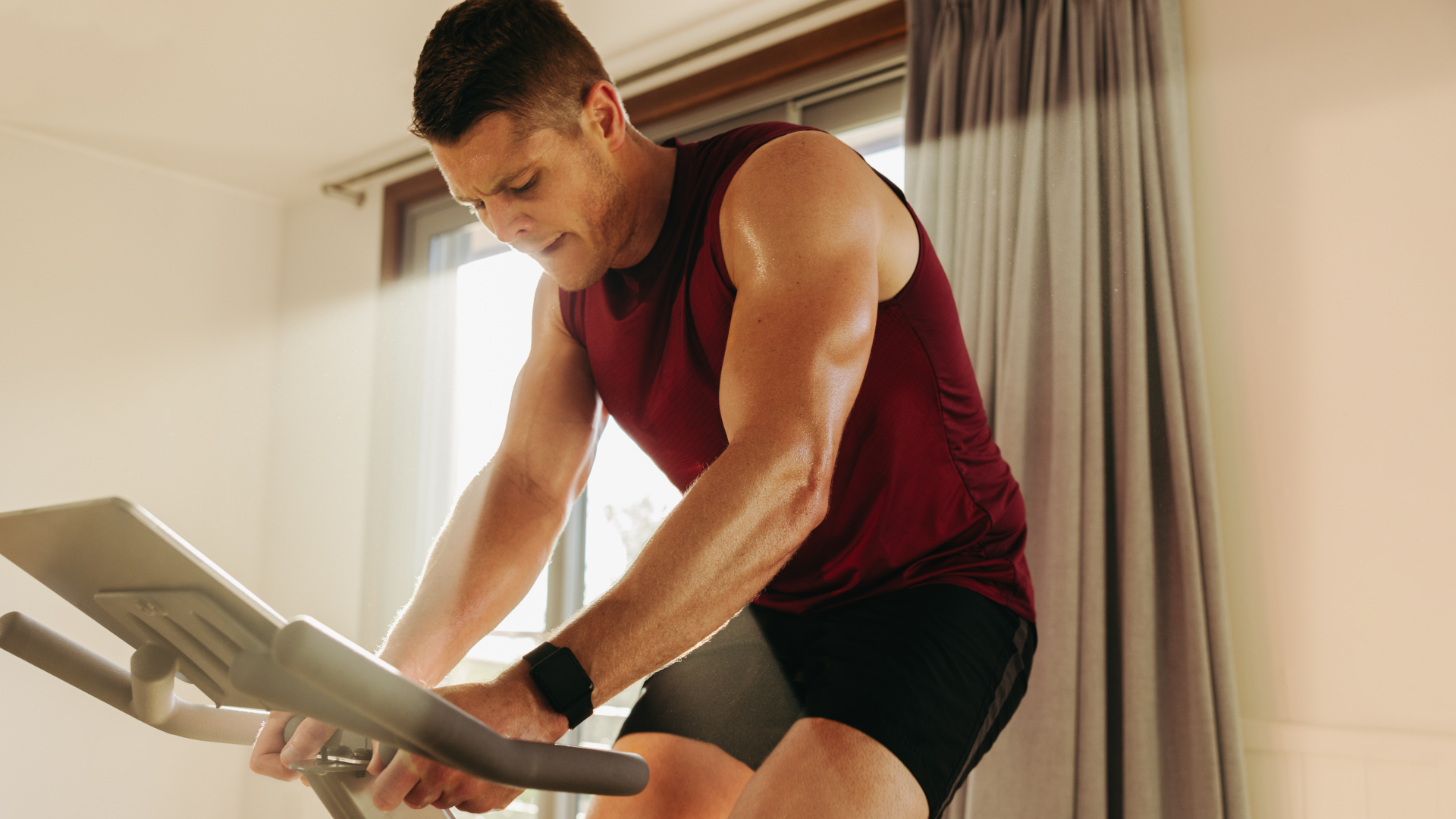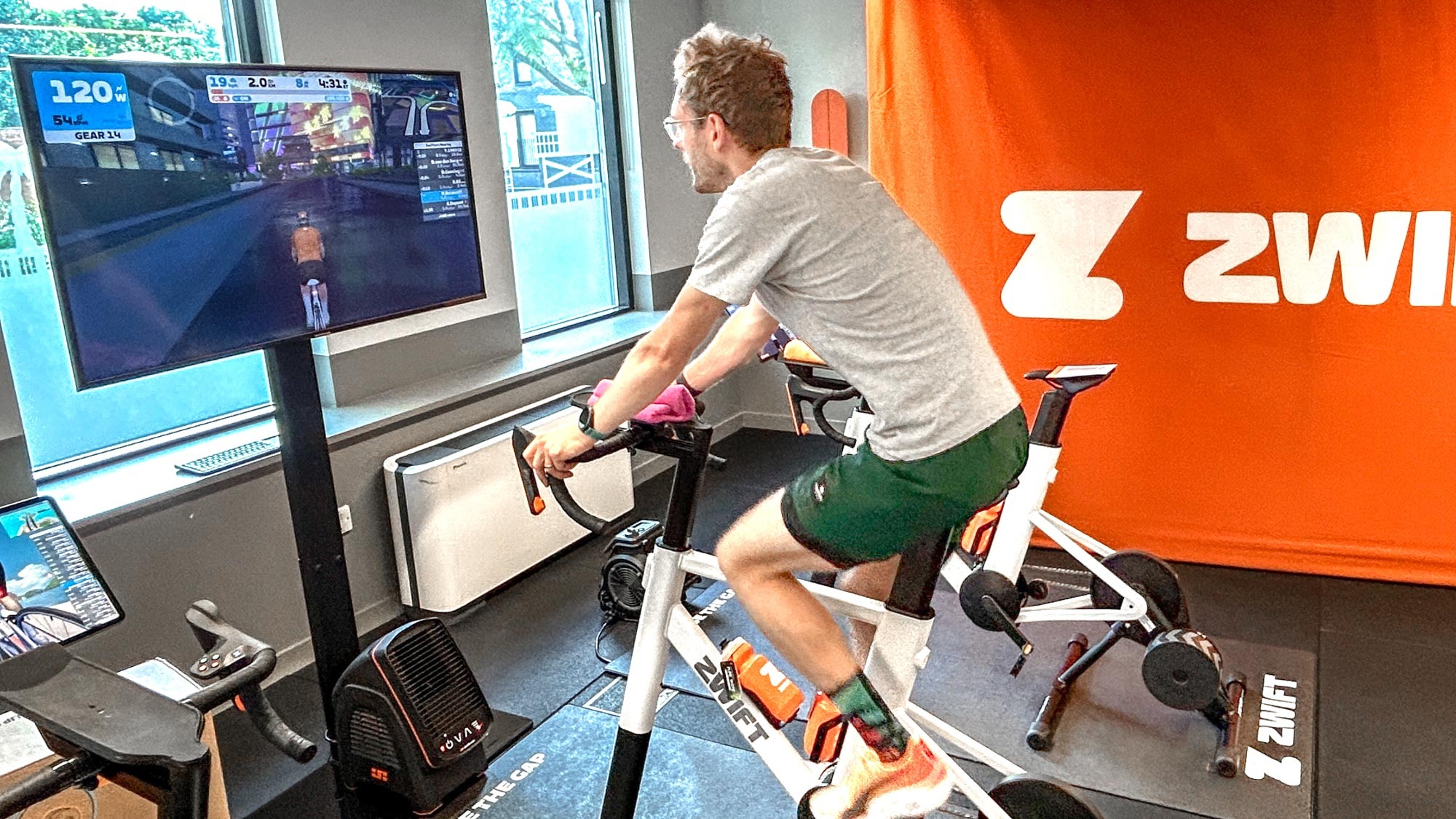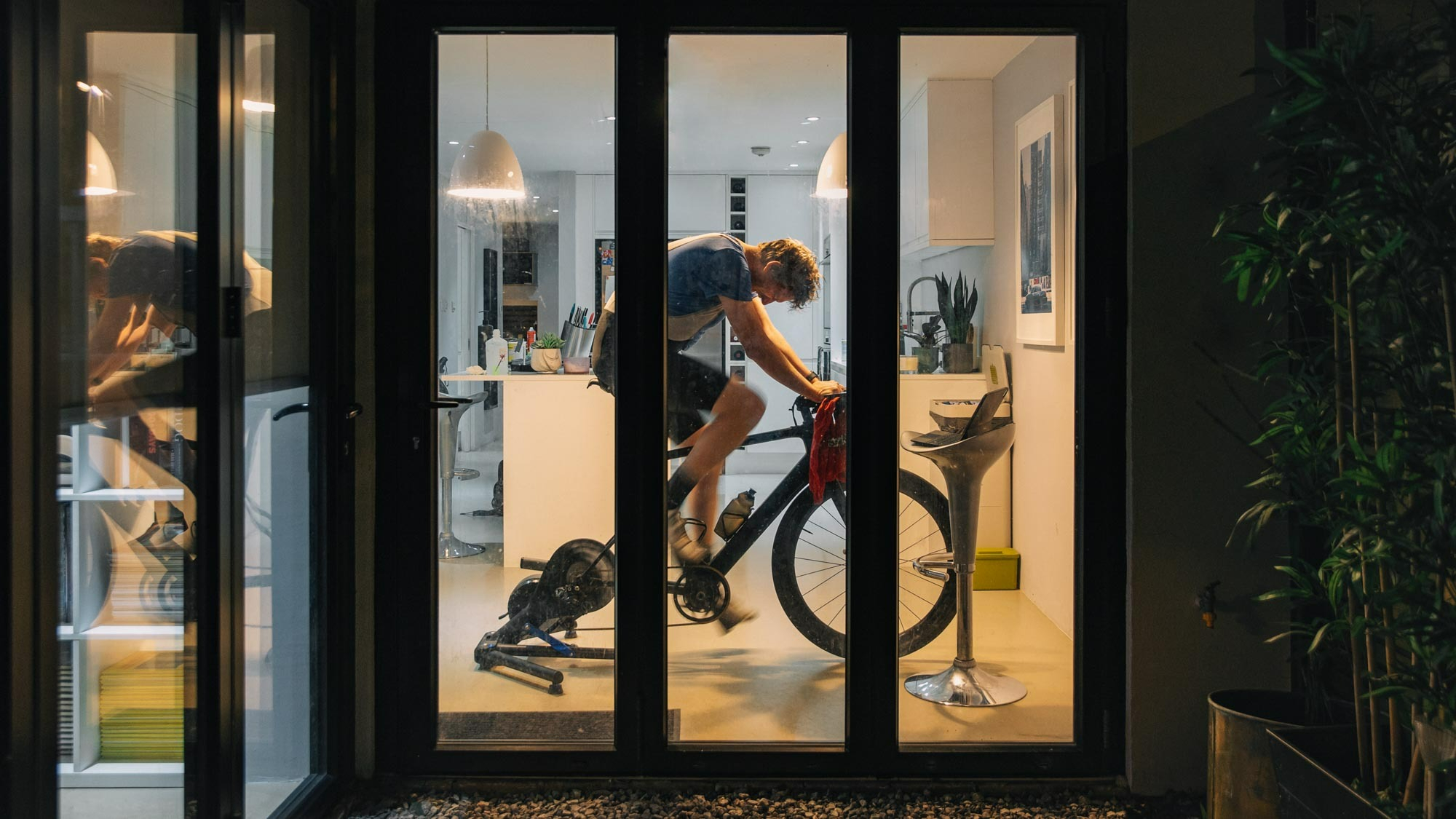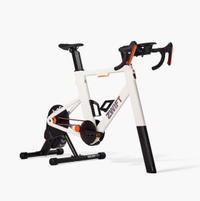I used indoor cycling to help me run a faster marathon — here’s 6 ways it helped
Improve your running with indoor cycling

Ever since I ran my first marathon in 2016 I’ve been obsessed with the event, and I’ve run another 14 marathons since that first one, improving my time by over an hour.
Most of my improvement has been down to running consistently under the guidance of my coach Andy Hobdell, and the easiest gains come early on simply by increasing your running mileage and doing structured training including interval workouts and tempo runs.
After a while, however, you start looking for other ways to improve your marathon training, and for me part of that has been the addition of indoor cycling to my training routine over the past year or so.
I’ve been using the Zwift Ride smart bike — one of the best exercise bikes — for most of this, along with an old turbo trainer rigged up to my road bike, riding two or three times a week normally and increasing my cycling at times when I wasn’t running so much.
Not only have I really enjoyed the extra training time on the bike, I’ve seen big improvements in my running, and set my marathon PR twice in running 2:27 at the London Marathon 2024 then 2:25 at the Seville Marathon 2025.
Lots of factors go into this — I’ve done the best running training of my life over the past year as well — but I do think indoor cycling is certainly something marathon runners can benefit from.
Here are six reasons why:
Sign up to get the BEST of Tom's Guide direct to your inbox.
Get instant access to breaking news, the hottest reviews, great deals and helpful tips.
We found the Zwift Ride easy to set up and use, and it's relatively affordable, too, making it a good option for first-time riders. Its biggest drawback, though, is that it doesn't work as well with third-party apps as other exercise bikes.
It’s a great way to do more low-impact training

The best way to get better at running is to run more, but there are a lot of caveats around that and one of them is that running is a high-impact sport and simply doing more and more of it can lead to injury.
I’ve been running around 60-80 miles a week during my marathon training over the past year, and then aiming to top that up with two to three indoor bike rides a week for more cardio that doesn’t put as much strain on my body.
I'm sure this extra training has helped, and it's also gotten me into a routine of training more, which should make it easier to adjust to running more milage in the future.
It’s a convenient way to train

I love running, but I don’t love it as much when it’s dark outside. In general I much prefer to run in the day when possible because it’s lighter, warmer, and it’s also easier to time my fueling for daytime runs around meals.
In contrast, I’m happy to jump on the indoor bike whenever, and enjoy an evening ride in particular, because there’s no weather or lack of light to worry about.
You can also fuel during a ride easily if you need to and I find I can eat meals shortly before an easy indoor ride without it upsetting my stomach like it does when running.
I also have to juggle training around my family, and once again it’s easy to jump on the indoor bike for a quick ride during my toddler’s nap.
It just opens up more time slots for training, which is important when looking to do two workouts a day in particular.
You can use it to train with (slight) pains
Sometimes you get injured when running and you can’t do anything, even indoor cycling. But there have been several times in the past year where I’ve had a small pain that I didn’t want to risk making worse by running.
One time in particular I twisted my ankle and was afraid of making it worse by running, but was able to cycle without feeling it at all, allowing me to keep training and maintain my fitness while taking a break from running.
You can control the intensity easily

This is the main reason I prefer using one of the best exercise bikes to riding outdoors, aside from the safety factor. With indoor rides you control exactly how hard you work very easily.
I generally do easy rides and can see my heart rate and maintain a low effort easily, but also I keep pedaling the whole time for a consistent workout that keeps my heart rate up.
In contrast when outdoors, I’d have to stop a lot for traffic lights and turns, and freewheel downhills, meaning I’d have to do longer rides to get the same overall effort as when indoors.
You can make it more relevant to running
The cardiovascular fitness you get from cycling is a clear benefit for running, but you can also make your indoor rides more specific to running by changing your position in the saddle to enlist the right muscles.
When I spoke to applied sports scientist Dr Barney Wainwright about this, he explained that standing up on the pedals more and adjusting the bike so the handlebars were higher and saddle was further forward will better recreate the position you’re in while running.
You can do a lot of other things while on an indoor bike
There are a lot of entertainment options open to you while indoor cycling. Virtual training apps like Zwift make the rides more engaging, and if you have a couple of devices you can have Zwift on one and a streaming service on the other.
I also used the time on the bike to catch up on messages and emails on my phone. If you’re short on time — and who isn’t, especially when you’re also squeezing in a load of marathon training runs — it’s a very time-efficient way to train.
More from Tom's Guide

Nick Harris-Fry is an experienced health and fitness journalist, writing professionally since 2012. He spent nine years working on the Coach magazine and website before moving to the fitness team at Tom’s Guide in 2024. Nick is a keen runner and also the founder of YouTube channel The Run Testers, which specialises in reviewing running shoes, watches, headphones and other gear.
Nick ran his first marathon in 2016 after six weeks of training for a magazine feature and subsequently became obsessed with the sport. He now has PBs of 2hr 27min for the marathon and 15min 30sec for 5K, and has run 13 marathons in total, as well as a 50-mile ultramarathon. Nick is also a qualified Run Leader in the UK.
Nick is an established expert in the health and fitness area and along with writing for many publications, including Live Science, Expert Reviews, Wareable, Coach and Get Sweat Go, he has been quoted on The Guardian and The Independent.
You must confirm your public display name before commenting
Please logout and then login again, you will then be prompted to enter your display name.

